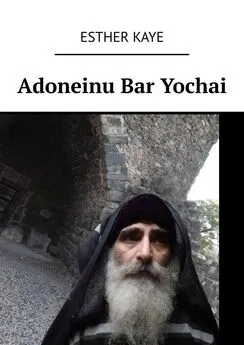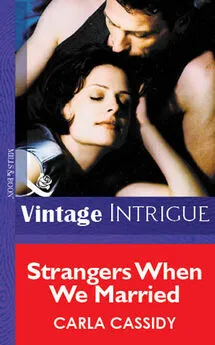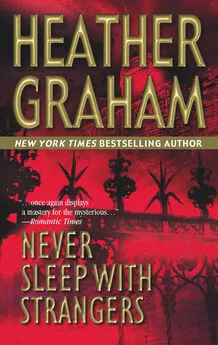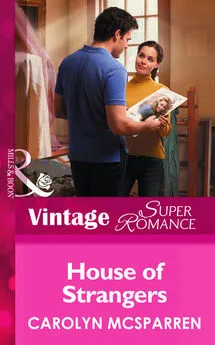Marguerite Kaye - Strangers at the Altar
- Название:Strangers at the Altar
- Автор:
- Жанр:
- Издательство:неизвестно
- Год:неизвестен
- ISBN:нет данных
- Рейтинг:
- Избранное:Добавить в избранное
-
Отзывы:
-
Ваша оценка:
Marguerite Kaye - Strangers at the Altar краткое содержание
Strangers at the Altar - читать онлайн бесплатно ознакомительный отрывок
Интервал:
Закладка:
‘If only you could find a woman to marry who has no interest in actually being your wife, your problems would be solved.’
She spoke flippantly, more to divert his attention from her own tragic situation than anything else, but Innes, who had been in the act of taking another sip of whisky, stopped, the glass half-way to his lips, an arrested look in his eyes.
‘Say that again.’
‘What? That you need to marry…?’
‘A woman who has no interest in being my wife,’ he finished for her with a dawning smile. ‘A woman who is in need of a home and has no fixed plans, who might actually be looking for a respite from her current life for a wee while. You’re right—that’s exactly what I need. And I know exactly the woman.’
‘You do? You cannot possibly mean…’
His smile had a wicked light in it. ‘I do,’ Innes said. ‘I mean you.’
AUTHOR NOTE Author Note Title Page About the Author Historical Note Contents Chapter One Chapter Two Chapter Three Chapter Four Chapter Five Chapter Six Chapter Seven Chapter Eight Chapter Nine Chapter Ten Chapter Eleven Chapter Twelve Chapter Thirteen Epilogue Extract Copyright
After I finished writing UNWED AND UNREPENTANT, which had a Clyde shipbuilder as its hero, I decided I wanted to stay close to home for my next story.
I started in Edinburgh, my favourite city second only to Paris, but the majority of Ainsley and Innes’s story is set in Tighnabruaich, on the west coast of Argyll. I renamed it Strone Bridge, but anyone familiar with the area will recognise it. The view of the Kyles of Bute which Ainsley comes to love is one of my own favourites. Ostell Bay, with its golden sands and crystal-clear though icy sea, is a childhood haunt. And the weather—the wet, driech , grey west-coast weather—that’s very true to life.
I hope that my love for the place where I was brought up, and where I now live and write, resonates in Ainsley and Innes’s story. I hope it will inspire some of you to visit. More than anything, I hope that I’ve done justice to it, and that the romance of the place has enhanced the romance I’ve written.
Enormous thanks once again to all my Facebook and Twitter friends who have helped and encouraged me while writing this book. Thanks to all who suggested names for Ainsley’s Agony Aunt alter ego, and in particular to Keira, who gave me Madame Hera, whose letters I had such fun dreaming up.
Strangers at the Altar
Marguerite Kaye
www.millsandboon.co.uk
Born and educated in Scotland, MARGUERITE KAYEoriginally qualified as a lawyer but chose not to practise. Instead, she carved out a career in IT and studied history part-time, gaining first-class honours and a master’s degree. A few decades after winning a children’s national poetry competition she decided to pursue her lifelong ambition to write, and submitted her first historical romance to Mills & Boon ®. They accepted it, and she’s been writing ever since.
You can contact Marguerite through her website at: www.margueritekaye.com
HISTORICAL NOTE Historical Note Contents Chapter One Chapter Two Chapter Three Chapter Four Chapter Five Chapter Six Chapter Seven Chapter Eight Chapter Nine Chapter Ten Chapter Eleven Chapter Twelve Chapter Thirteen Epilogue Extract Copyright
Paddle steamers and the railways brought tourism to the west coast of Scotland at around the time when Ainsley and Innes decided to set up their hotel. Though the original and most popular destinations ‘doon the watter’ on the Clyde were Rothesay, Largs and Dunoon, Tighnabruaich (aka Strone Bridge) had its share of excursionists. The engineer David Napier, whose Loch Eck tours inspired Ainsley, built a pier on the Holy Loch in the 1830s, not far from my own home.
Numerous versions of the Rothesay Castle paddle steamer made the journey from Glasgow, Gourock and eventually Wemyss Bay railway terminals to the Isle of Bute. Today, the last sea-going paddle steamer, the Waverley , makes the same journey from Glasgow to Bute and down the beautiful Kyles all the way to Tighnabruaich.
Strone Bridge Castle is actually based on Panmure House, the seat of the Maules near Dundee, which was demolished in 1955. The story which Innes tells Ainsley of the locked gates following the 1715 Jacobite rebellion belongs to Panmure, details and pictures of which are in Ian Gow’s beautiful book Scotland’s Lost Houses. The chapel attached to Strone Bridge Castle, though, is based on the one belonging to Mount Stuart in Rothesay.
Agony Aunts existed, astonishingly, as far back as the seventeenth century, though they reached their peak in the mid-Victorian era—a little after Madame Hera was writing. There are some fantastic examples of their letters in Tanith Carey’s book Never Kiss a Man in a Canoe.
As to the traditions and customs in this book—well, I must admit that I’ve let my imagination loose a wee bit. All the Hogmanay customs are traditional, but the Rescinding ceremony is not. I actually invented it for an earlier book set in Argyll, THE HIGHLANDER’S REDEMPTION, and I liked it so much I thought I’d start a tradition of my own and re-use it.
Contents
Cover
Introduction ‘If only you could find a woman to marry who has no interest in actually being your wife, your problems would be solved.’ She spoke flippantly, more to divert his attention from her own tragic situation than anything else, but Innes, who had been in the act of taking another sip of whisky, stopped, the glass half-way to his lips, an arrested look in his eyes. ‘Say that again.’ ‘What? That you need to marry…?’ ‘A woman who has no interest in being my wife,’ he finished for her with a dawning smile. ‘A woman who is in need of a home and has no fixed plans, who might actually be looking for a respite from her current life for a wee while. You’re right—that’s exactly what I need. And I know exactly the woman.’ ‘You do? You cannot possibly mean…’ His smile had a wicked light in it. ‘I do,’ Innes said. ‘I mean you.’
Author Note AUTHOR NOTE Author Note Title Page About the Author Historical Note Contents Chapter One Chapter Two Chapter Three Chapter Four Chapter Five Chapter Six Chapter Seven Chapter Eight Chapter Nine Chapter Ten Chapter Eleven Chapter Twelve Chapter Thirteen Epilogue Extract Copyright After I finished writing UNWED AND UNREPENTANT, which had a Clyde shipbuilder as its hero, I decided I wanted to stay close to home for my next story. I started in Edinburgh, my favourite city second only to Paris, but the majority of Ainsley and Innes’s story is set in Tighnabruaich, on the west coast of Argyll. I renamed it Strone Bridge, but anyone familiar with the area will recognise it. The view of the Kyles of Bute which Ainsley comes to love is one of my own favourites. Ostell Bay, with its golden sands and crystal-clear though icy sea, is a childhood haunt. And the weather—the wet, driech , grey west-coast weather—that’s very true to life. I hope that my love for the place where I was brought up, and where I now live and write, resonates in Ainsley and Innes’s story. I hope it will inspire some of you to visit. More than anything, I hope that I’ve done justice to it, and that the romance of the place has enhanced the romance I’ve written. Enormous thanks once again to all my Facebook and Twitter friends who have helped and encouraged me while writing this book. Thanks to all who suggested names for Ainsley’s Agony Aunt alter ego, and in particular to Keira, who gave me Madame Hera, whose letters I had such fun dreaming up.
Title Page Strangers at the Altar Marguerite Kaye www.millsandboon.co.uk
About the Author Born and educated in Scotland, MARGUERITE KAYE originally qualified as a lawyer but chose not to practise. Instead, she carved out a career in IT and studied history part-time, gaining first-class honours and a master’s degree. A few decades after winning a children’s national poetry competition she decided to pursue her lifelong ambition to write, and submitted her first historical romance to Mills & Boon ® . They accepted it, and she’s been writing ever since. You can contact Marguerite through her website at: www.margueritekaye.com
Historical Note HISTORICAL NOTE Historical Note Contents Chapter One Chapter Two Chapter Three Chapter Four Chapter Five Chapter Six Chapter Seven Chapter Eight Chapter Nine Chapter Ten Chapter Eleven Chapter Twelve Chapter Thirteen Epilogue Extract Copyright Paddle steamers and the railways brought tourism to the west coast of Scotland at around the time when Ainsley and Innes decided to set up their hotel. Though the original and most popular destinations ‘doon the watter’ on the Clyde were Rothesay, Largs and Dunoon, Tighnabruaich (aka Strone Bridge) had its share of excursionists. The engineer David Napier, whose Loch Eck tours inspired Ainsley, built a pier on the Holy Loch in the 1830s, not far from my own home. Numerous versions of the Rothesay Castle paddle steamer made the journey from Glasgow, Gourock and eventually Wemyss Bay railway terminals to the Isle of Bute. Today, the last sea-going paddle steamer, the Waverley , makes the same journey from Glasgow to Bute and down the beautiful Kyles all the way to Tighnabruaich. Strone Bridge Castle is actually based on Panmure House, the seat of the Maules near Dundee, which was demolished in 1955. The story which Innes tells Ainsley of the locked gates following the 1715 Jacobite rebellion belongs to Panmure, details and pictures of which are in Ian Gow’s beautiful book Scotland’s Lost Houses. The chapel attached to Strone Bridge Castle, though, is based on the one belonging to Mount Stuart in Rothesay. Agony Aunts existed, astonishingly, as far back as the seventeenth century, though they reached their peak in the mid-Victorian era—a little after Madame Hera was writing. There are some fantastic examples of their letters in Tanith Carey’s book Never Kiss a Man in a Canoe. As to the traditions and customs in this book—well, I must admit that I’ve let my imagination loose a wee bit. All the Hogmanay customs are traditional, but the Rescinding ceremony is not. I actually invented it for an earlier book set in Argyll, THE HIGHLANDER’S REDEMPTION, and I liked it so much I thought I’d start a tradition of my own and re-use it.
Contents
Chapter One
Chapter Two
Chapter Three
Chapter Four
Chapter Five
Chapter Six
Chapter Seven
Chapter Eight
Chapter Nine
Chapter Ten
Chapter Eleven
Chapter Twelve
Chapter Thirteen
Epilogue
Extract
Copyright
Chapter One
Dear Madame Hera,
The other day, while taking a walk in the Cowgate district of Edinburgh, I was approached by a young man who gave me some assistance with my umbrella. Since he was very well dressed, seemed most polite, and the rain was coming down in torrents, it seemed churlish of me not to offer to share my shelter. He accepted with some alacrity, but the small circumference of my umbrella forced us into a somewhat compromising intimacy, of which the gentleman was not slow to take advantage. He stole a kiss from me, and I permitted him to take several more while we found respite from the downpour in the close of a nearby tenement. By the time the rain stopped, we were rather better acquainted than we ought to have been.
We parted without exchanging details. Alack, when he left me, the young man took not only my virtue but my umbrella. It was a gift from another gentleman, who is bound to question me most closely when he discovers its loss. I fear he will not understand the peculiar effect the combination of rain, a good-looking young man and a very small umbrella can have on a woman’s willpower. What should I do?
Читать дальшеИнтервал:
Закладка:
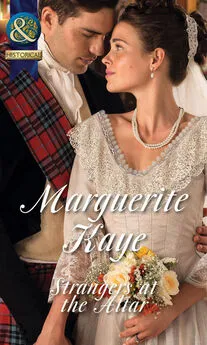

![Джеймс Купер - Пионеры, или У истоков Саскуиханны [The Pioneers, or The sources of the Susquehannah]](/books/1066142/dzhejms-kuper-pionery-ili-u-istokov-saskuihanny-t.webp)

